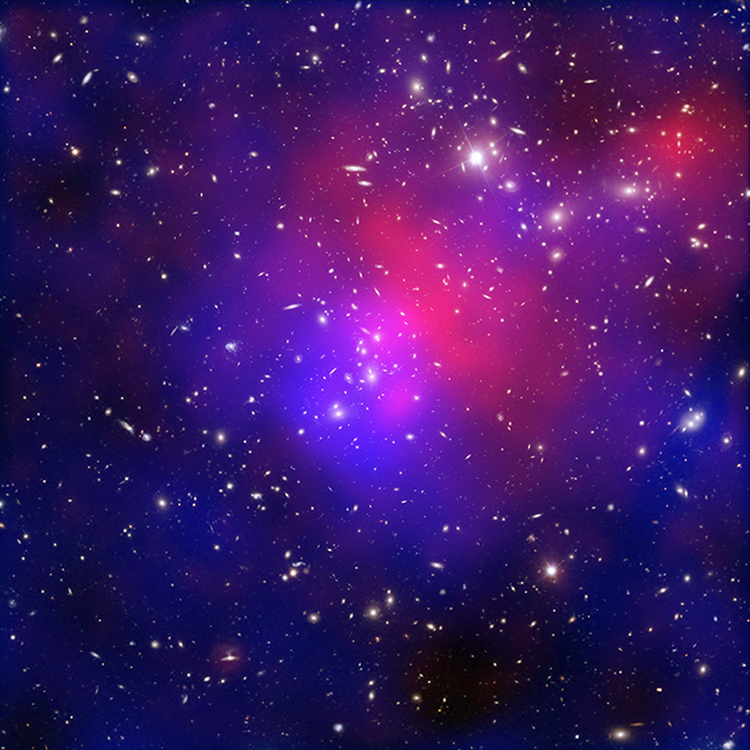
 Credit: X-ray: NASA/CXC/ITA/INAF/J.Merten et al, Lensing: NASA/STScI; NAOJ/Subaru; ESO/VLT, Optical: NASA/STScI/R.Dupke
Credit: X-ray: NASA/CXC/ITA/INAF/J.Merten et al, Lensing: NASA/STScI; NAOJ/Subaru; ESO/VLT, Optical: NASA/STScI/R.Dupke
Four-Way Stop Sign
The Universe can be a rather crowded place to a galaxy cluster. Galaxy clusters are the largest self-bound structures in the Universe, and form the "basic building blocks" of the Universe's cosmic web. To a large telescope, a galaxy cluster appears composed of dozens of individual, glowing galaxies. But in reality, most of the matter in a given galaxy cluster is invisible to us. We can see the effects of this dark matter's gravity, which acts as the glue holding the cluster together. Even though most of the known Universe is made of it, we don't understand dark matter at all, beyond its apparent gravitational pull, so any information we can get on this pervasive stuff is priceless. Astronomers have been able to use collisions of galaxy clusters as cosmic atom smashers to help constrain the true nature of dark matter. One such collision is shown above, a giant structure called Abell 2744. Using detailed images in the optical, obtained by the Very Large Telescope on the earth, and the Hubble Space Telescope, astronomers have been able to determine the precise distribution of the gravitating dark matter. This distribution is shown in blue in the image above. X-ray emission from "normal" matter, as seen by the Chandra X-ray Observatory, is shown in red. The separation between the normal matter and the dark matter is probably produced by the electromagnetic ways normal matter can interact; dark matter is impervious to electromagnetic forces and so can spread out more than normal matter can. Astronomers think that Abell 2744 is actually a collision of four individual sub-clusters, and the relative distribution of the light and dark matter may indicate how the dark matter was slingshotted around in the violent intergalactic crash.
Published: June 27, 2011
<
HEA Dictionary ● Archive
● Search HEAPOW
● Other Languages
● HEAPOW on Facebook
● Download all Images
● Education ● HEAD
>

Each week the HEASARC
brings you new, exciting and beautiful images from X-ray and Gamma ray
astronomy. Check back each week and be sure to check out the HEAPOW archive!
Page Author: Dr. Michael F. Corcoran
Last modified Monday, 26-Feb-2024 17:34:14 EST


